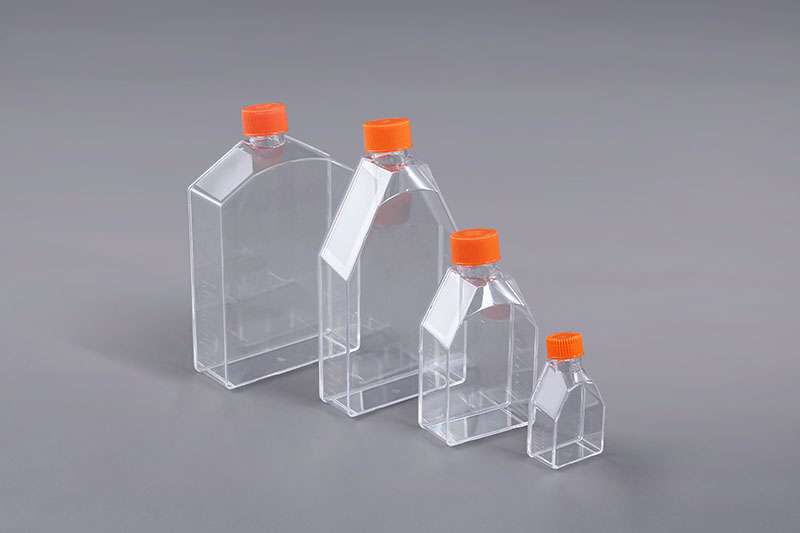See the different uses of cell culture flasks from specifications
The cell culture flask is a special cell culture consumable with a square and wide bottleneck design. According to the different needs of use, this consumable is divided into 25cm2, 75cm2, 175cm2, 225cm2 and other specifications to meet the different needs of experimenters.
Small size: The size of the cell refers to the culture area of the cell culture flask. The 25cm2 and 75cm2 bottles are mainly used for cell recovery and small-scale expansion. Cell resuscitation is a biological term that refers to the process of re-cultivating cells frozen in liquid nitrogen or in a refrigerator at -70°C to restore growth. Cell expansion refers to expanding and reculturing existing cells.

Large size: 175cm2 and 225cm are mainly suitable for medium-scale cell culture and eukaryotic protein expression. When used for cell culture, it usually refers to adherent cells, and some suspension cells also use this consumable. Eukaryotic protein expression is a commonly used method for expressing recombinant proteins in recent years. It supplements some functions that are lacking in prokaryotic protein expression systems. For example, it can form stable disulfide bonds during eukaryotic expression. Correctly modify the protein to make the expressed protein more natural activity instead of being degraded or forming inclusion bodies; the use of eukaryotic expression system can induce high-efficiency expression, speeding up the process of people's gene research and drug research.
The above are the uses of cell culture flasks of different specifications. No matter which aspect is used, the basic requirements such as DNase-free, RNase-free, and pyrogen-free are the same, which is also the basic requirement for cell growth.
评论
发表评论